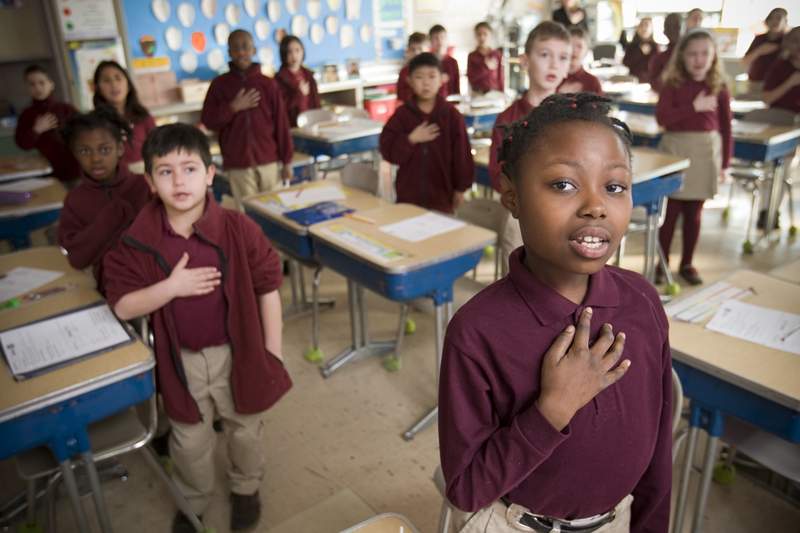By Leslie Puente-Ervin
LatinaLista
If you want to send your child to a private school, that’s your prerogative. You pay for that right. Charter schools? They may appear private, but they’re really public.
While many receive private funding, the majority are publicly funded. Even so, they operate on a lottery system where only a selected few gain access while the others have to trudge back to their low-performing schools.
Where’s the equity in that?
Charter schools were first instituted as a response to Bush’s No Child Left Behind Act signed into law in 2002, aiming to provide disenfranchised children with options outside of their at-risk schools; however, not all students benefit from this option.
Instead, charter schools perpetuate the segregation that already persists in this country. According to the National Center for Education Statistics, 51 percent of American students live in poverty. A disportionate number of those students are Black and Latino who live in communities already segregated.
Students who are underserved are more likely to end up as teenage parents, succumb to a life of crime or/and drugs, or/and continue the cycle of poverty.
What would happen if all the monies allocated to charter schools [and other alternative schooling options] were suddenly redirected to restoring public schools, training teachers, and purchasing top-of-the-line resources? And, we give all students access to these schools, equipped with research-based interventions for struggling students and enrichment programs for the accelerated learner?
Every student would find him/herself sitting in front of a competent teacher and engaging in rigorous learning. Every student would have hope for a promising future.
It might sound like a dream, but it’s not impossible.This is exactly what charter schools are doing. They are building schools right in the inner cities.
KIPP, an acronym for Knowledge Is Power Program, for example, is a national organization. According to their website, they currently have 200 schools scattered all over the U.S. There’s even one in Camden, NJ – declared the worst city in the country.
If a charter school housed in the most underserved cities can send students to college, commit to providing a quality education to underprivileged students, and deliver on that promise by investing limitless resources in education, then, what does that really mean for our public school system?
I’m not necessarily against charter schools. I embrace the idea of magnet schools. I attended a performing arts high school, and it changed my life.
STEM schools, vocational schools – great ideas! Those are the kind of options I can stand behind for our future leaders, but not everyone will be a performer or an engineer. And, we need quality programs in the public schools too in order for all students to be successful.
We need to attend to their emotional needs as well. So many bold innovators are opening charter schools to escape the bureaucracy that controls public education.
I concede that there’s no simple solution, but is our public education destined to become Alternative Ed programs and nothing more?
Or worse, null and void?
Is the future of public education that grim?
Leslie Puente-Ervin is a teacher, scholar, and researcher. She’s currently enrolled in an EdD program and has dedicated most of her 15 year teaching career studying curriculum, instruction, and assessment.



